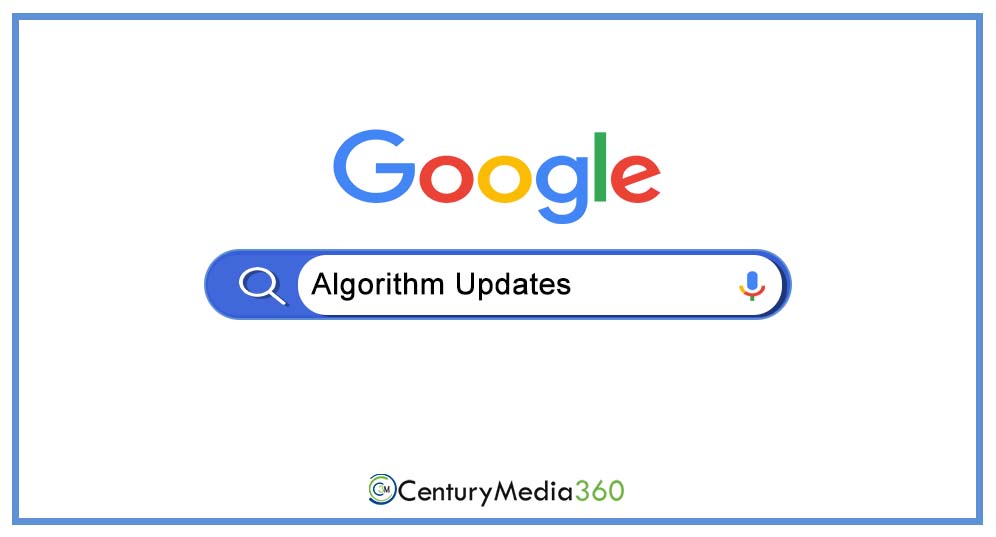Google Algorithm Updates You Should Know About

Each year, Google updates its search algorithms hundreds of times. Most of these adjustments are modest. To provide webmasters time to plan and optimize, “core” modifications are occasionally publicized far in advance of the distribution.
The simplest method to get ready for and gain from every Google algorithm update is to just look over Google’s search engine optimization instructions. In general, you won’t need to worry much if you can optimize your site right away so that you are creating high-quality content and giving fantastic experiences.
A Brief of Google Algorithm
To best respond to search requests, Google’s algorithms operate in a complicated system (there are more than 200 ranking variables, for example). The best websites to respond to a particular search query are determine by each Google algorithm using a set of rules and data from its index. The search engine then uses its pre-programmed ranking signals to order those pages in search results according to their relevancy.
How Often Do These Updates Happen?
When Google originally began, they weren’t updating their algorithm as frequently as they do now. Today, Google releases thousands of changes each year, both significant and little. The majority of them are micro-updates, and users and webmasters are generally unaffected, although occasionally Google releases a significant algorithm update. Webmasters and SEO experts often need to prepare for these more significant algorithm upgrades. Google refers to algorithm modifications to its algorithms as “core updates” when they involve major changes to a key component of the algorithm and have a substantial influence on user experience or SEO.
Google Algorithm Updates over the Period
Here is a collection of the most significant Google algorithm adjustments in the last ten years, along with a brief explanation of what each change means for users and websites.
- Panda
- Penguin
- Hummingbird
- Pigeon
- RankBrain
- Possum
- BERT
Panda
The Panda update added a new ranking factor that penalized keyword stuffing and content farms as part of Google’s effort to provide visitors with high-quality material. By recognizing thin, spammy, and low-quality information and deleting it from the top search ranks, improved search results.
Penguin
Targeting webspam-containing and link-manipulating websites were the goals of the Penguin algorithm upgrade. Google referred to it as the “webspam algorithm update.”
As a result of this improvement, the system can now determine if links pointing back to a certain page are genuine or just spam.
Hummingbird
Insect hummingbird The search engine experience was significantly influence by a Google algorithm upgrade. With this improvement, Google was able to comprehend “search intent” better. It enabled the search engine to better correctly contextualize user searches and website data and link the two.
Pigeon
It’s a pigeon The Google Core Algorithm Update focuses on enhancing local search. Pigeon was create to bridge the gap between Google’s web algorithm and local search algorithm in order to enhance proximity-based ranking factors.
RankBrain
To assist in determining the most pertinent search results for a particular query, the RankBrain upgrade added additional machine learning artificial intelligence. With this upgrade, queries are processed by an interpretation model that may use any combination of variables, such as location and word count, to ascertain intent and provide the most pertinent responses.
Possum
Local search results were enhance by the Possum update. Before this modification, it was extremely difficult for companies who were located just outside the actual city borders of a place to rank for relevant keywords. Such problems were resolve with this upgrade. Additionally, it increased the significance of the searcher’s geographic location and the sensitivity of local word variants.
BERT
The Bidirectional Encoder Representations from Transformers (BERT) method is a machine learning system for natural language processing. Understanding what the words in a phrase mean to a human aids search engines. With the BERT upgrade, Google is better able to comprehend user search queries. Also, identify the information that is more valuable and pertinent to those searches.
Recent Google Algorithm Updates
Year – 2021
Broad Core Update (2021) – On June 2, 2021, and continuing until June 12, 2021, Google handed out their core upgrade. The update was release in two parts, the second of which was release between July 1 and July 12, 2021. It was a global update that didn’t target any one location, language, or section of the website. While some websites saw an increase in their ranks, others saw a decline in the SERPs. The new change is anticipated to provide more weight to traditional On-Page and Off-Page indicators including domain age, domain authority, backlinks, and others.
Spam Update on June 2021 – The Google Spam Update began on June 23 and was complete the following day. Filtering suspicious and hazardous information was the main goal of this upgrade, along with trying to enhance user experience. In order to combat spammy websites and protect its consumers, Google has been heavily investing in and developing AI technology.
Year – 2022
Core Update – The May 2022 Core Algorithm Update deployment has been announced by Google, which practically implies that the unpredictable SERPs fluctuation season has returned. Given that it has been six months since Google released a Core Update, there has been a lot of talk about an imminent update. Google last released a major update in November 2021.
Google Product Review Update – Google updated its algorithm for product reviews on July 27, 2022. In a series of algorithm modifications aimed toward product reviews, this is the fourth upgrade. This algorithm upgrade, which was introduce on July 27th, 2022, will be fully implement in two to three weeks.
This algorithm upgrade, which is an expansion of Google’s product review algorithm initially introduced in March 2021, is anticipated to favor websites who post product evaluations based on in-depth research over those that only restate the information found on the manufacturer’s website.






